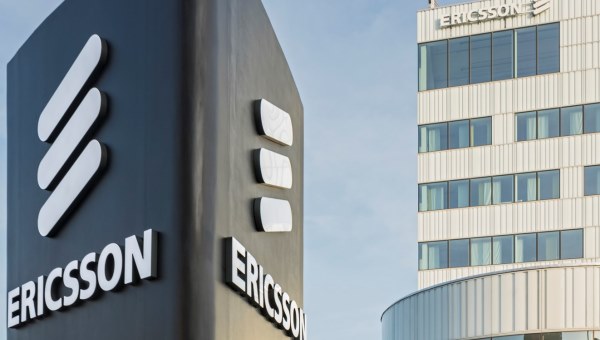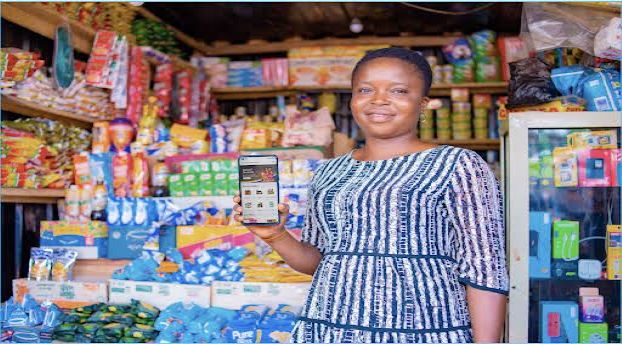Telecom
Ericsson Commits to Net Zero by 2040 in 2021 Sustainability and Corporate Responsibility Report

Ericsson delivered on its sustainability targets and made a series of new commitments in 2021. The company put a particular focus on energy performance and strengthening its ambition to reach Net Zero across its value chain by 2040.

In 2021 Ericsson introduced a new vision to improve lives, redefine business and pioneer a sustainable future. Building on decades as a sustainability pioneer, the company has made a strong commitment to fulfilling this vision through its own efforts and through working across and beyond the ICT ecosystem.
This focus is reflected in Ericsson’s latest Sustainability and Corporate Responsibility Report, which highlights its 2021 performance across the areas of responsible business, environmental sustainability and digital inclusion.
“Our sustainability-driven solutions and partnerships create real impact for our customers and our stakeholders,” says Heather Johnson, Ericsson’s Head of Sustainability and Corporate Responsibility.
“But they also create value for society, whether by enabling the reduction of emissions across industries, creating more energy-efficient networks or helping to bridge the digital divide. We made significant progress towards our sustainability goals in 2021, and we are now setting even more ambitious targets for the future.”
Performance and highlights
Net Zero: In 2021 Ericsson set a long-term ambition to be Net Zero by 2040 across its value chain. To meet this ambition, Ericsson will work towards 1.5°C aligned climate targets set by the Paris Agreement.
The first major milestone is to achieve Net Zero emissions from the company’s own activities by 2030 – as well as reducing emissions by 50 percent in its portfolio and supply chain also by 2030.
Energy performance: To meet customer expectations and help the telecom industry reach Net Zero, Ericsson has developed innovative solutions that enable operator networks to use as little energy as possible while managing expected growth in data traffic, meeting the needs of both current and future 5G networks.
In 2021, Ericsson achieved 36% energy savings from delivered Ericsson Radio System radios versus the legacy portfolio, surpassing the company’s approved Science Based Target of 35 percent one year ahead of schedule.
During 2021, Ericsson also launched a series of ultra-light Massive MIMO radios that are 10 percent more energy efficient than the previous generation.
Digital inclusion: The digital divide continues to be a key challenge to global economic development with roughly 2.9 billion people still offline. With innovative technologies and services, Ericsson and its partners and customers are pioneering new ways to connect societies and improve lives.
In 2021 Ericsson continued its partnership with UNICEF in support of the Giga initiative, helping to map schools and assessing their connectivity in 35 countries by the end of 2023.
Ericsson also made a commitment to positively impact one million children and youth by 2025 by providing access to digital learning and skill development programs as part of the World Economic Forum-aligned EDISON Alliance 1 Billion Lives Challenge.
Corporate responsibility: Ericsson continued its focus on health, safety and well-being in 2021, including a robust COVID-19 response that included a focus on employee mental health and access to vaccines in places where they were not easily accessible.
In 2021 there was an increase in work-related fatalities compared to 2020, in contrast to the decreasing trend of recent years. The company has declared this unacceptable and is more committed than ever to Target Zero – a goal of zero fatalities and lost workday incidents.
Ericsson launched its revised Code of Business Ethics, which defines both the company’s ethical principles and its expectations of responsibility across the value chain. The company also added integrity as one of its four core values as well as publishing a report on the human rights impact of 5G.
Ericsson’s Sustainability and Corporate Responsibility Report is part of the Company’s Annual Report and externally assured by an independent third party. It is also produced in accordance with GRI Sustainability Reporting Standards and the UN Guiding Principles on Business and Human Rights Reporting Framework.
Ericsson continues to strengthen its radio access network (RAN) portfolio with solutions that address the 5G rollout and sustainability goals of communications service providers. Announced today, the portfolio additions will deliver sizeable energy savings and up to ten-fold capacity increases – with minimal or no added footprint.
Leading the portfolio enhancements is Radio 4490, a dual-band radio that delivers 25 percent lower power consumption and lesser weight compared to the current product. This radio type is compatible with most of the radio sites globally as it supports the main FDD (Frequency Division Duplex) bands being used by many service providers for their 5G deployment.
Ericsson is also launching a high-power version of the new dual-band radio, 4490 HP, which enables up to 50 percent more output power compared to current radios. The two new radios apply passive cooling – reducing power consumption further, as fans are not needed. They are also Cloud RAN-ready.
Per Narvinger, Head of Product Area Networks, Ericsson, says: “We continue to evolve our RAN portfolio with more solutions for smart, slim, and sustainable 5G networks. Our latest innovations will further optimize 5G sites for both purpose-built and Cloud RAN deployments.”
5G rollouts are accelerating across the world, with frontrunners gearing up for the shift to 5G Standalone to drive new consumer and enterprise use cases. Introducing 5G means added spectrum and hardware – which is where Ericsson’s new products play a key role through the ability to raise capacity while slashing power usage – fueling efforts to break the energy curve.
Telecom
African Women Hit Hardest as Mobile Internet Gender Gap Persists

African women remain among the most digitally excluded globally, with smartphone affordability and digital literacy among the key barriers. New data from the 2025 GSMA Mobile Gender Gap Report, launched recently, reveals a persistent global gender gap in mobile internet use across low- and middle-income countries (LMICs).

It further notes that literacy, digital skills, safety, and affordability of data also remain critical barriers. The report highlights that 885 million women across these regions still do not use mobile internet, with nearly 60% of them living in Sub-Saharan Africa and South Asia.
While mobile internet is the primary way women in LMICs access the internet, offering critical lifelines to health, education, and financial services, the pace of female adoption has stalled, leaving 235 million fewer women than men connected.
Claire Sibthorpe, head of digital inclusion at GSMA, highlighted that the gender gap had narrowed significantly between 2017 and 2020, but progress flatlined in recent years.
Although 2023 brought a slight improvement, restoring the gap to 15%, 2024 saw minimal change, with the gap settling at 14%.
The disparity is most severe in Sub-Saharan Africa, where women are 29% less likely than men to use mobile internet.
“It’s disheartening that progress in reducing the mobile internet gender gap has stalled. The digital divide is driven by deep-rooted socio-economic and cultural factors that disproportionately impact women,” said Sibthorpe.
GSMA projects that closing the gender gap by 2030 could add $1.3 trillion to GDP across LMICs and deliver $230 billion in revenue to the mobile industry.
The report, funded by the UK FCDO, Sida, and the Gates Foundation, stresses the urgent need for targeted investment and policy action to bridge the digital divide and ensure that no woman is left offline.
“The mobile internet gender gap is not going to close on its own. It is driven by deep-rooted social, economic, and cultural factors that disproportionately impact women,” said Sibthorpe.
Telecom
₦800 Billion Infrastructure Plan Set to Boost MTN’s Network Quality Nationwide

In a recent interview, MTN Nigeria reaffirmed that its ongoing infrastructure investment is a strategic step to improve network quality, speed, and nationwide coverage.

Speaking on Beyond the Headlines with Nifemi Oguntoye, Ugonwa Nwoye, Chief Customer and Experience Officer at MTN Nigeria, explained that although public concern is valid, the company undertook several internal cost-efficiency measures before making structural adjustments.
She emphasised that improved investment is critical to fast-tracking improvements across MTN’s network.
Nwoye explained that MTN undertook extensive internal reforms before embarking on structural changes needed to support this scale of investment.
The company completed its phased roll-out of the increase between February and March, ensuring that every existing data plan was below the 50% increase, and most remained below 25%.
She also noted that customers were proactively informed about all changes, particularly when certain legacy plans were retired and replaced with new ones. “We gave customers six to eight weeks’ notice,” she explained.
“This is why it has taken us some time to complete this process, where we let customers know that at a certain date, this particular tariff is not going to exist.”
Nwoye stressed that MTN had exhausted other internal measures before turning to broader structural updates. Now, with the new pricing structure in place, the company is accelerating its investment in infrastructure, spending over ₦200 billion in the first quarter of 2025 alone, a 159% increase from the same period last year. A total capital expenditure of ₦800 billion is planned for the year.
She noted that this investment is a direct outcome of long-term operational restructuring aimed at improving service quality.
She added, “We are investing over ₦800 billion this year alone in our infrastructure. This will translate into better customer experience, reduced congestion, faster internet speeds, and wider network reach.”
This investment will support the upgrade of over 1,000 cell sites and the expansion of more than 2,000 transmission links nationwide.
Nwoye stressed that these upgrades are designed to deliver faster data speeds, fewer dropped calls, and broader network reach, especially in underserved areas.
She acknowledged the public’s expectations for immediate service improvements but emphasised that large-scale infrastructure takes time to deploy.
Nonetheless, MTN expects customers to begin experiencing visible improvements in network performance by the second half of the year.
In a sector where service quality and customer satisfaction are closely watched, MTN maintains that its ongoing investments are not merely capital commitments but vital enablers of improved digital experiences across Nigeria.
Telecom
Remita’s Bold Leap: Nigeria’s Fintech Giant Expands Across Africa

Remita, the pioneering Nigerian payment technology platform developed by SystemSpecs, is charting a bold new course with its planned expansion into markets across Africa.

What began as a payroll feature in an HR application has now become a robust ecosystem processing over ₦60 trillion annually—one that stands on the verge of reshaping the continent’s fintech landscape, Mr. Deremi Atanda, Managing Director/CEO of Remita Payment Services Limited, says in an exclusive interview that will grace the cover of eGovernance Nigeria Magazine.
The forthcoming edition of eGovernance Nigeria Magazine, a publication of the Technology Times media brand owned and operated by Digital Transformation Media Limited (DTML), will spotlight this extraordinary journey, and present Remita’s evolution as an inspiring tale that informs, educates, and entertains readers about indigenous innovation making global strides.
“We’ve become an ecosystem of rails, products, and services—robust,” Atanda, Managing Director/CEO of Remita explains during the exclusive interview with eGovernance Nigeria Magazine.
“Layering all of that with the many different customers we’ve had, typically every year we process in excess of maybe ₦60 trillion in transactions in Nigerian Naira. And this can only grow, especially as we begin to think of a vibrant Pan-African expansion. We’re at the fringe of that.”
In a compelling narrative that mixes grit, vision, and innovation, Atanda recounts Remita’s early days. “What many people know today as Remita actually started out as a feature within our HR/payroll application.
“You process salaries, and you just want to pay—so just remit salaries. And by the way, that’s where the name ‘Remita’ came from: Remittance. We just took out one ‘T’ and left it at ‘A.’”
Even the company’s logo carries symbolism of that transformation. “I don’t know if you’ve seen our logo—it has three dots, in ascending size. There are many stories in that logo. It started as a feature, and then we brought it out as a product,” Atanda explains.
Yet the road was not without its bumps. “The first time we brought it out as a product was to bid for the National Pension Commission. This was in 2004, with the PenCom Act.
“We packaged this into a product in less than two weeks to take care of end-to-end pensions as it was conceived. Trust me, that vision is still viable today. But we lost that bid.”
Undeterred, SystemSpecs pivoted. “We went back and said, ‘What do we do with this asset?’ If it’s not going to work for pensions, let it become a product. And that’s how we renamed pensions.com.ng as Remita, and it became a product.”
As demand grew, Remita expanded beyond payroll. “Some people want to do their own payroll and just make payments, so let them have a site to go to. Later, it evolved into not just payroll payments. People wanted to do other types of payments. If you want to do non-salary payments, you go to Remita,” he says.
Today, Remita has fully matured into a standalone company. “So those three things—feature, product, company. That’s been the evolution.” With a Tier 1 licence from the Central Bank of Nigeria, Remita is now a fintech powerhouse. “We do switching, we do payment service provisioning, we do super agency, we do terminals—everything you can think about. We provide some basic services within the payment space, including payment service advisory.”
A lesser-known chapter of Remita’s growth includes building Nigeria’s first account-to-accountswitch. “Before TSA, we had built a rail—Nigeria’s first account-to-account switch, worked with all the banks. Not many people know that story. Account-to-account. The front of it, the application, and the rail—first of its kind.”
On the pivotal Treasury Single Account (TSA) deal with the Federal Government of Nigeria, Atanda reveals, “TSA was a happenstance. The government was looking to solve a problem, and we were looking to get regulated. It’s that term people use—when they say ‘luck,’ it’s just preparation meeting opportunity.”
Reflecting on the journey, he adds, “These have been some of those moments where you feel validated, where the visionary leadership that set the business up feels the vision is being realized.”
Today, Remita employs over 300 Nigerians and looks beyond its home shores. “The vision is huge, and we’re committed to that. So, we see exponential growth, and we’re positioning for that.”
Mr. Shina Badaru, Chairman of DTML, says Remita’s story is an inspirational example of local innovation with global relevance. “Remita’s success highlights the critical role of indigenous technology solutions in redefining Africa’s digital economy,” he says.
“As the cover story of the next issue of eGovernance Nigeria Magazine, we aim to showcase how homegrown innovation is not only solving problems locally but is also poised to transform markets across the African continent.”
According to Badaru, “Remita’s inspiring journey connects seamlessly with our article of faith to continue to showcase Nigeria’s growing contributions to the global technology industry.”
eGovernance Nigeria Magazine is a flagship DTML platform with operations across print, digital, TV, events, and e-commerce channels.
“This feature not only celebrates Remita’s evolution,” Badaru adds, “but also signals a pivotal shift in the narrative of Nigerian and African technology—from survival to scale, from local impact to continental transformation.”
As Remita sets its sights on Africa, it is poised to bring financial inclusion, digital infrastructure, and innovative fintech solutions to new and underserved markets. With a strong foundation and visionary leadership, the company is ready to deliver the next phase of its remarkable journey.

 General News3 days ago
General News3 days agoNITDA Advocates Strategic Partnership in Research to Unlock Nigeria’s Digital Potential

 Telecom2 days ago
Telecom2 days ago₦800 Billion Infrastructure Plan Set to Boost MTN’s Network Quality Nationwide

 Telecom3 days ago
Telecom3 days agoGSMA Urges Governments to Prioritise Affordable Spectrum Costs to Support Global Digital Growth

 E-Business2 days ago
E-Business2 days agoNITDA, CISCO Empower Youth with Digital Skills

 Telecom3 days ago
Telecom3 days agoTelcos Worry over Possible 5 Percent Tax Return

 Telecom2 days ago
Telecom2 days agoAfrican Women Hit Hardest as Mobile Internet Gender Gap Persists

 News2 days ago
News2 days agoCreative Economy Ministry Secures $300M Investments Commitment

 Telecom3 days ago
Telecom3 days agoSophos Launches MSP Elevate Program to Boost MSP Growth and Profitability

























